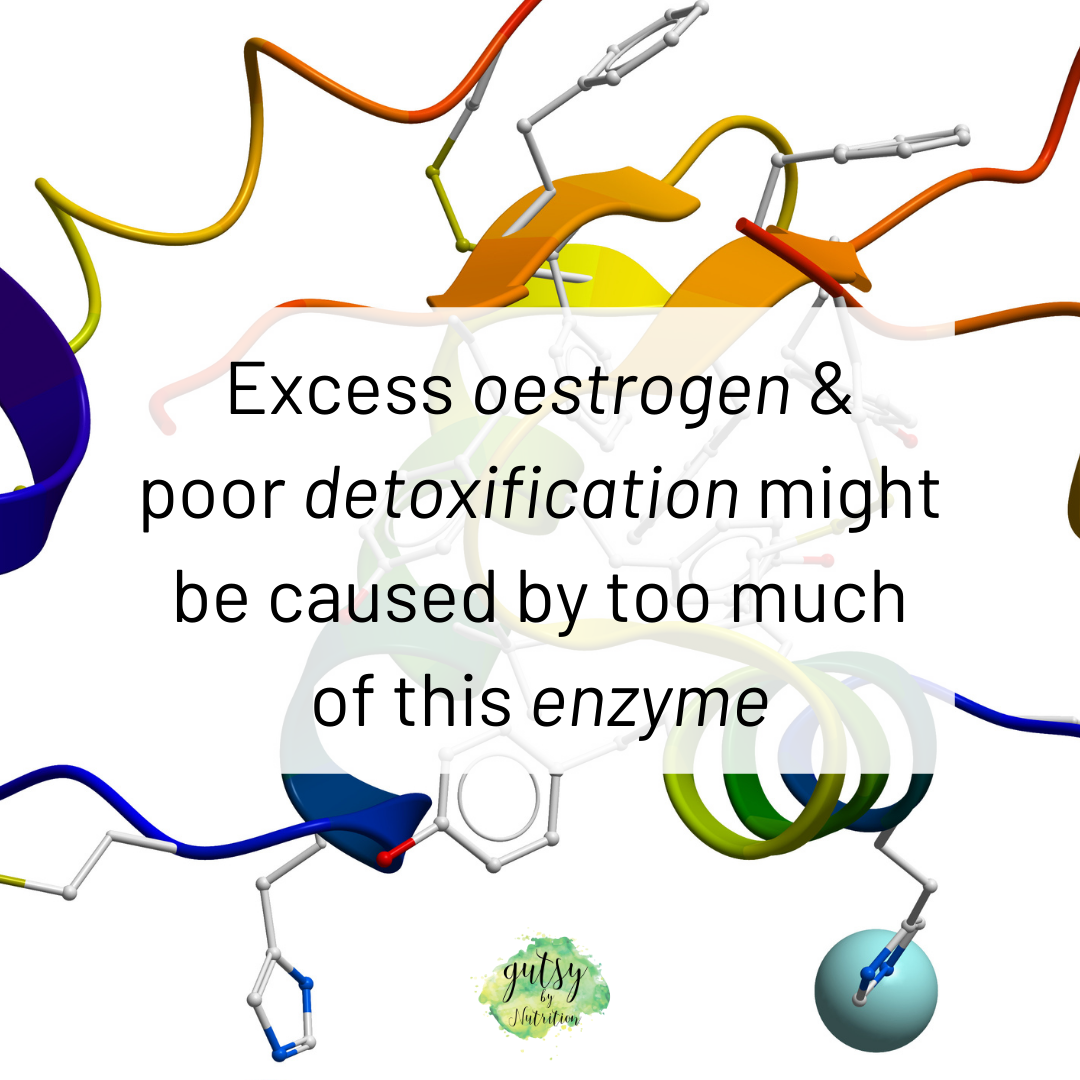Excess oestrogen & toxicity might be caused by too much Beta-Glucuronidase
Beta-Glucuronidase is an enzyme (279 different types have so far been identified) involved in one of the most important detoxification processes in the body. It helps excrete cancer-causing toxins, and excess fat-soluble and steroid hormones.
The liver does this by creating a bond between these things when they’re targeted for excretion. They are then got rid of via bile in the intestines and out of the body.
But when beta-glucuronidase levels get too high, this bond can be broken, meaning the toxin or hormone may not be excreted and could even be reabsorbed and recirculated in the body. This includes any drugs that are taken, which might be reactivated in the colon, including over-the-counter paracetamol and ibuprofen.
Why does beta-glucuronidase get too high?
Dysbiosis (gut infections and imbalances in the large intestine)
SIBO (small intestinal bacterial overgrowth)
Overexposure to toxins or drugs (antibiotics, hormonal therapy, and drugs used for hypercholesterolaemia, hypertension and asthma)
Colon cancer (in extreme cases)
Too much dietary protein (red meat)
This can lead to excess oestrogen in the body, which can lead to a host of imbalances; and cause hormone-sensitive cancers like breast, ovarian and prostate as well as digestive tract cancers.
In terms of dysbiosis, the major bacteria responsible for high levels of beta-glucuronidase include
Bacteroides fragilis, Bacteroides vulgatus, Bacteroides uniformis, Clostridium paraputrificum, Clostridium clostridioforme, Clostridium perfringens, Escherichia coli, Eubacterium, Peptostreptococcus, Ruminococcus, Staphylococcus.
The way I deal high beta-glucuronidase in my clinic is to
Support the liver to create healthy levels of beta-glucuronidase, possibly using milk thistle or calcium D-glucarate
Correct sluggish bile production, possibly using bile salts
Use a binder to help carry toxins out
Eradicate gut infections like bacterial overgrowths using the 5Rs protocol
Improve healthy gut bacteria levels and diversity by eating more fibre, probiotics and fermented foods
Beta-Glucuronidase levels are tested in microbiome mapping (stool testing). If it does not appear there, it could still appear in SIBO breath testing.
Testing isn’t always necessary though. Beta-glucuronidase is something I address incidentally when correcting my clients’ foundational health issues based on my extensive signs and symptoms questionnaires. The body constantly strives for balance and will self-correct given half a chance.
But if you suspect you might have too much of this enzyme, you could try a food-based approach and eat the prebiotic fibre glucomannan (found in konjac root and konjac-based foods such as low-calorie noodles and pasta), which naturally lowers faecal beta-glucuronidase levels.

